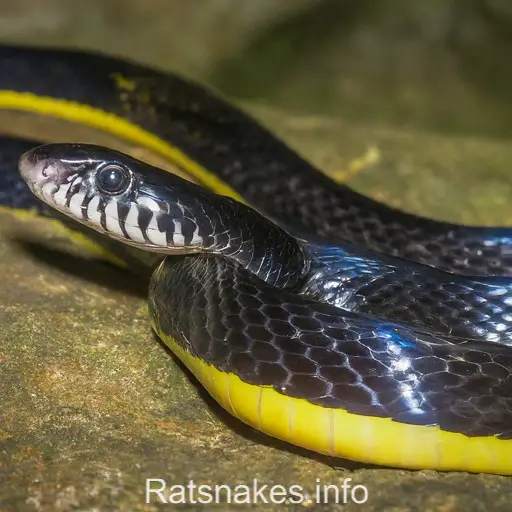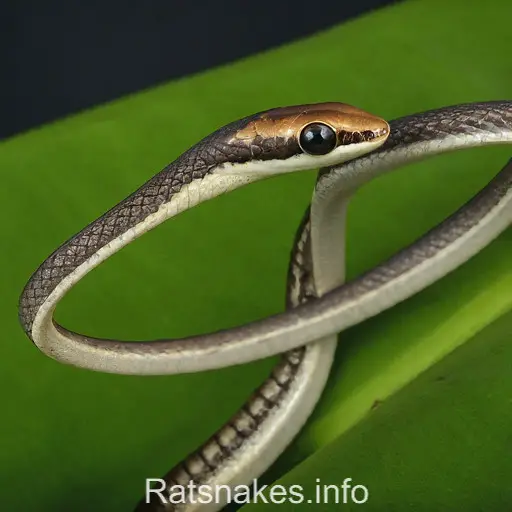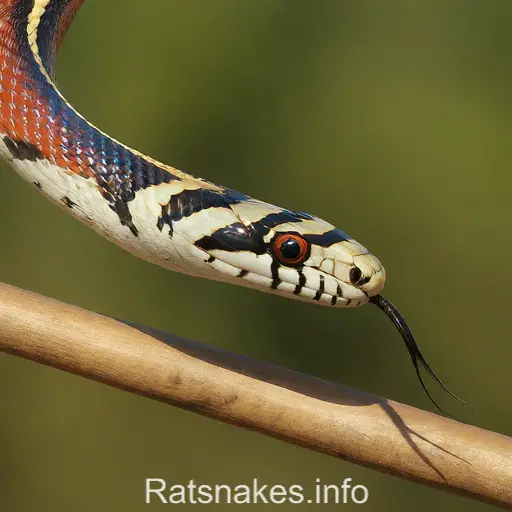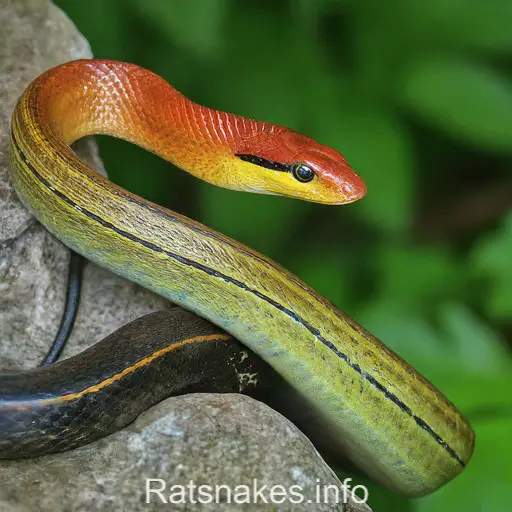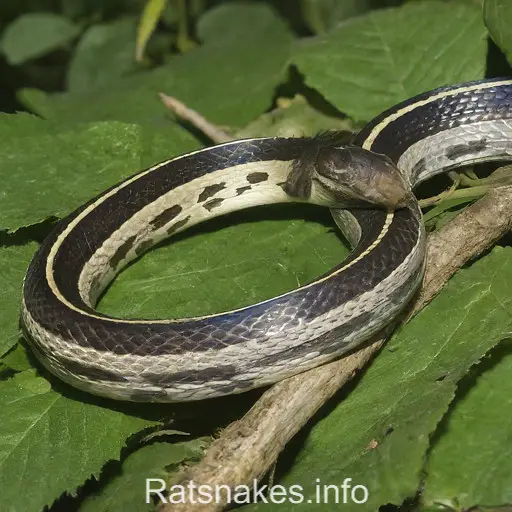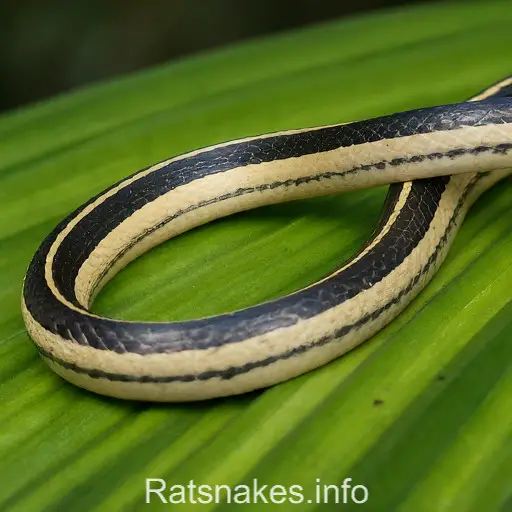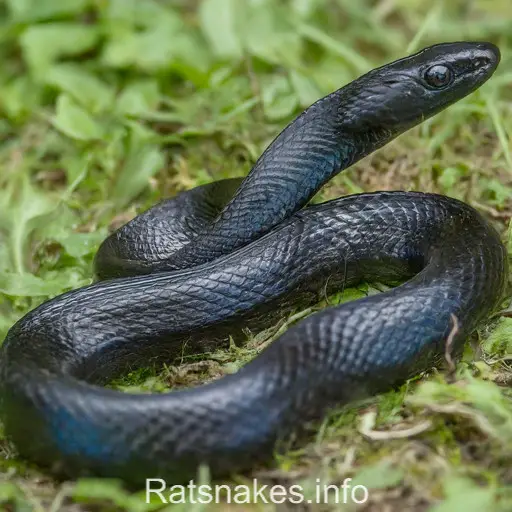
Are you ready to dive into the fascinating world of the Black Rat Snake (Pantherophis obsoletus)? These sleek and stealthy creatures are a common sight in many regions of North America. With their distinctive black scales and impressive hunting skills, they are truly a marvel of nature. Join us as we explore the habits, characteristics, and importance of the Black Rat Snake in our ecosystem.
As one of the largest snake species in North America, the Black Rat Snake plays a crucial role in controlling rodent populations. Their adaptability and keen sense of smell make them efficient hunters, helping to keep the balance of nature in check. Despite their intimidating appearance, these snakes are non-venomous and pose no threat to humans. Stay tuned as we uncover more intriguing facts about these remarkable reptiles.
From their unique behaviors to their essential role in the food chain, the Black Rat Snake is a species worth learning about. Join us on this journey as we unravel the mysteries and wonders of the Pantherophis obsoletus.
Habitat and Range
When it comes to their habitat and range, Black Rat Snakes are highly adaptable creatures that can thrive in various environments. They are commonly found in forests, fields, rocky areas, and farmlands across North America, including regions like the eastern United States and parts of southern Canada.
This snake species prefers habitats with ample shelter and food sources, making them well-suited for both natural and human-made environments. Black Rat Snakes are excellent climbers and can often be spotted in trees or buildings in search of prey or suitable nesting sites.
Their range extends from southern Ontario in Canada, down to South Florida, and as far west as Central Texas. These snakes are known for their ability to adapt to different climates and landscapes, proving their resilience and survival skills over a wide geographic area.
One interesting behavior of the Black Rat Snake is its ability to hibernate during colder months. They seek out underground burrows or dens to spend the winter in a state of dormancy until temperatures rise again. This adaptation helps them survive harsh winter conditions and ensures their continued presence in their habitats year after year.
Physical Characteristics
When it comes to Black Rat Snakes, their physical characteristics are distinct and make them easily recognizable. Here are some key features:
- Size: They can grow to an impressive length of 4 to 6 feet, with some reaching up to 8 feet.
- Coloration: Typically, they have a black dorsal side with a white or cream-colored belly, accentuated by dark blotches along their body.
- Scales: Their scales are smooth, making them agile climbers in various terrains.
- Eyes: Known for their large, round pupils and keen eyesight, aiding them in hunting and navigating their surroundings.
- Patterns: Some individuals may exhibit variations in color patterns, such as a slight reddish hue or gray tones, adding to their unique appearance.
- Tail: Their tails are pointed and do not end in a rattle like some other snake species.
These physical traits contribute to the Black Rat Snake’s ability to thrive in a diverse range of environments and adapt to different conditions effortlessly.
Behavior and Diet
Black Rat Snakes are solitary creatures, typically active during the day (diurnal), especially in the spring and fall when they are most active in their search for food.
- Diet: Their diet mainly consists of rodents, including mice, rats, and small mammals. They are also known to feed on birds’ eggs and nestlings when the opportunity arises.
- Hunting: These snakes are constrictors, meaning they squeeze their prey until it suffocates. They are excellent climbers and are capable of hunting in trees to catch birds and their eggs.
- Behavior: Black Rat Snakes are generally non-venomous and rarely pose a threat to humans. When threatened, they may release a foul-smelling musk to deter predators or flatten their bodies to appear larger.
- Reproduction: Mating usually occurs in the spring, and female Black Rat Snakes lay a clutch of 6-24 eggs in a hidden location. The eggs hatch in late summer or early fall, producing independent young snakes.
- Feeding Frequency: Black Rat Snakes do not need to feed frequently and can survive on a few large meals by digesting food slowly.
Black Rat Snakes’ behavior and diet showcase their adaptability as efficient hunters in their natural habitats.
Role in the Ecosystem
Black Rat Snakes play a crucial role in their ecosystem as predators that help control rodent populations, making them valuable in maintaining the ecological balance. By preying on rodents, these snakes contribute to pest control in their habitats, which can benefit agricultural areas and human settlements. Additionally, Black Rat Snakes also target bird nests, aiding in controlling bird populations, particularly those that may be considered pests in certain environments.
These snakes are considered keystone species, impacting the distribution and abundance of other species within their ecosystems. As apex predators, they help regulate the population of their prey, preventing potential overpopulation that could disrupt the delicate balance of the food chain. As a result, Black Rat Snakes indirectly influence the well-being of various plant species that may be affected by uncontrolled rodent populations.
Moreover, Black Rat Snakes can serve as indicators of ecosystem health. Their presence and population trends can reflect the overall biodiversity and ecological stability of their habitats. Monitoring these snakes can provide valuable insights into the health of the ecosystem and any potential ecological disturbances that may be occurring, offering early warning signs of environmental imbalances that require attention and conservation efforts.
In essence, Black Rat Snakes are not just formidable hunters but also key players in maintaining the harmony and sustainability of their natural environments.
Conservation Status
When it comes to the conservation status of Black Rat Snakes (Pantherophis obsoletus), it’s essential to consider their role in the ecosystem. These snakes play a vital part in rodent and bird population control, influencing the overall balance in their habitats. Despite their significance, Black Rat Snakes face threats that impact their populations:
- Habitat Loss: Due to urbanization and deforestation, Black Rat Snakes lose their natural habitats.
- Road Mortality: These snakes are often victims of road accidents, especially in areas where roads intersect their habitats.
- Persecution: Misunderstanding and fear lead to intentional killings of these beneficial snakes.
To protect and conserve Black Rat Snakes, it’s crucial to implement measures such as:
- Habitat Preservation: Maintaining and restoring natural habitats help ensure the survival of these snakes.
- Road Mitigation: Implementing wildlife crossings and warning signs reduce road mortality.
- Education: Raising awareness about the importance of Black Rat Snakes can help dispel myths and reduce persecution.
Understanding and addressing these conservation challenges are paramount in safeguarding Black Rat Snakes and maintaining the ecological balance they contribute to in their ecosystems.
Key Takeaways
- Black Rat Snakes are non-venomous and play a crucial role in controlling rodent populations, making them valuable in maintaining the ecological balance.
- They are adaptable creatures found in forests, fields, rocky areas, and farmlands across North America, known for their ability to hibernate during colder months.
- Black Rat Snakes have distinct physical characteristics such as smooth scales, large round pupils, and a length of 4 to 6 feet, contributing to their ability to thrive in diverse environments.
- Their diet mainly consists of rodents, birds’ eggs, and nestlings, showcasing their adaptability as efficient hunters.
- Black Rat Snakes are considered keystone species, impacting the distribution and abundance of other species within their ecosystems, and serving as indicators of ecosystem health.
- Conservation efforts like habitat preservation, road mitigation, and education are essential to protect and conserve Black Rat Snakes from threats like habitat loss, road mortality, and persecution.
Conclusion
Protecting Black Rat Snakes is crucial for maintaining ecosystem balance. By focusing on habitat preservation, road mitigation, and education, we can ensure their survival. These snakes play a vital role in their habitats, and addressing conservation challenges is key to safeguarding their existence. Let’s work together to protect Black Rat Snakes and uphold the ecological harmony they contribute to.

